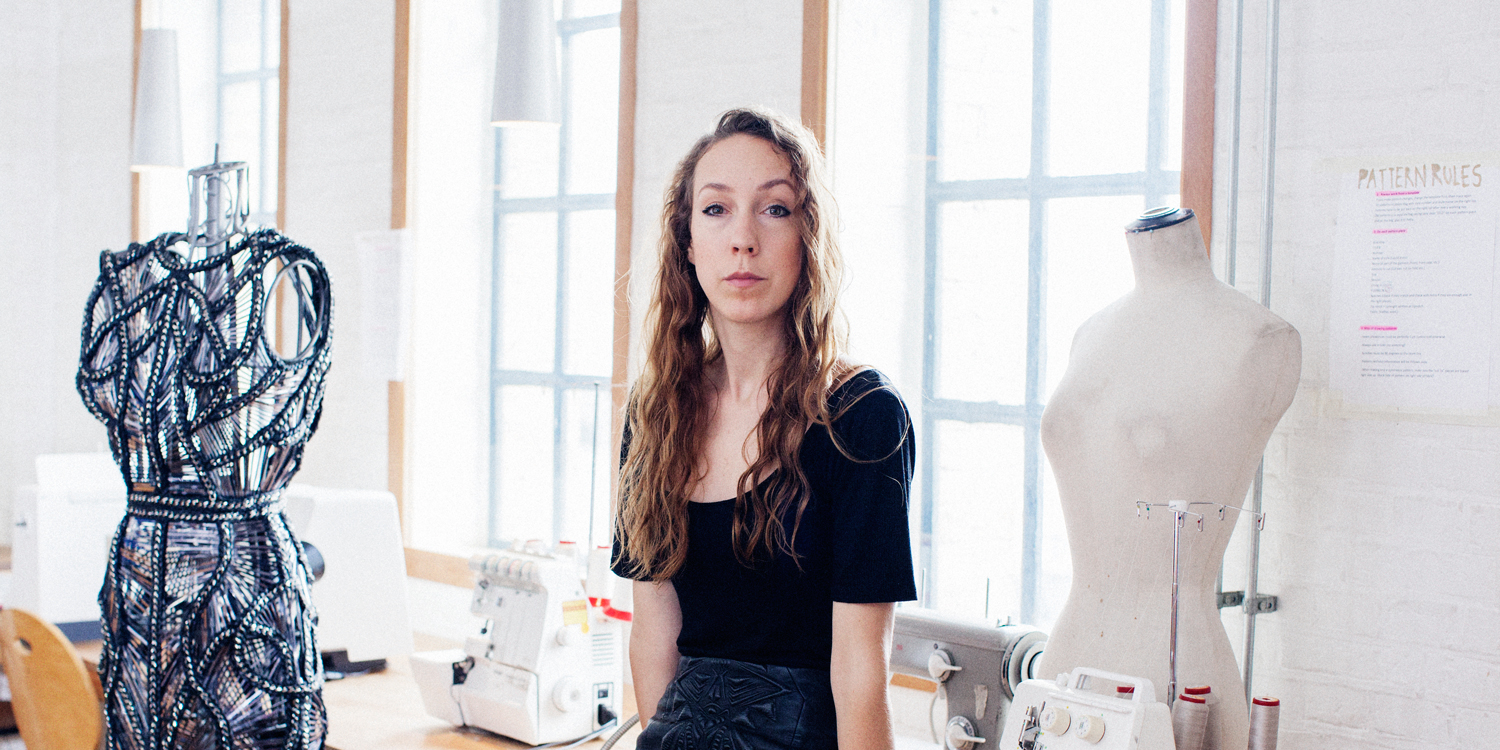
The world Iris van Herpen creates is unlike any other. In it models are vacuum packed in suspended animation, thunderstorms ricochet onto catwalks, and fabrics reverb acoustic soundscapes.
Her fans are equally eclectic. Björk, Beyoncé and Grimes – powerful women, with electrifying projects – frequently go to her for beautifully eerie creations that command the attention of everyone from cult fashion designers, like Rick Owens, to esteemed critics, such as Suzy Menkes.
Some of this respect for van Herpen is derived from her experimental application of new technology. In the fashion world she’s known as a pioneer of 3D printing, nanorobotics and synthetic biology – the stuff science-fiction writers like JG Ballard once dreamt of.
But another key part of her success is down to the attention to detail she places on craft – a quality that has garnered her membership to the prestigious Parisian Chambre Syndicale de la Haute Couture, and a place for her work in numerous respected institutions and museums, like the Victoria & Albert and Palais de Tokyo.
For van Herpen the driving factor that brings both baroque artistry and technology together – two typically divergent disciplines – is undoubtedly a love of dance. “Movement itself is really what inspires me,” says van Herpen. “I am interested in technology, because in my core I am really a fanatic about handwork, craft and movement.”
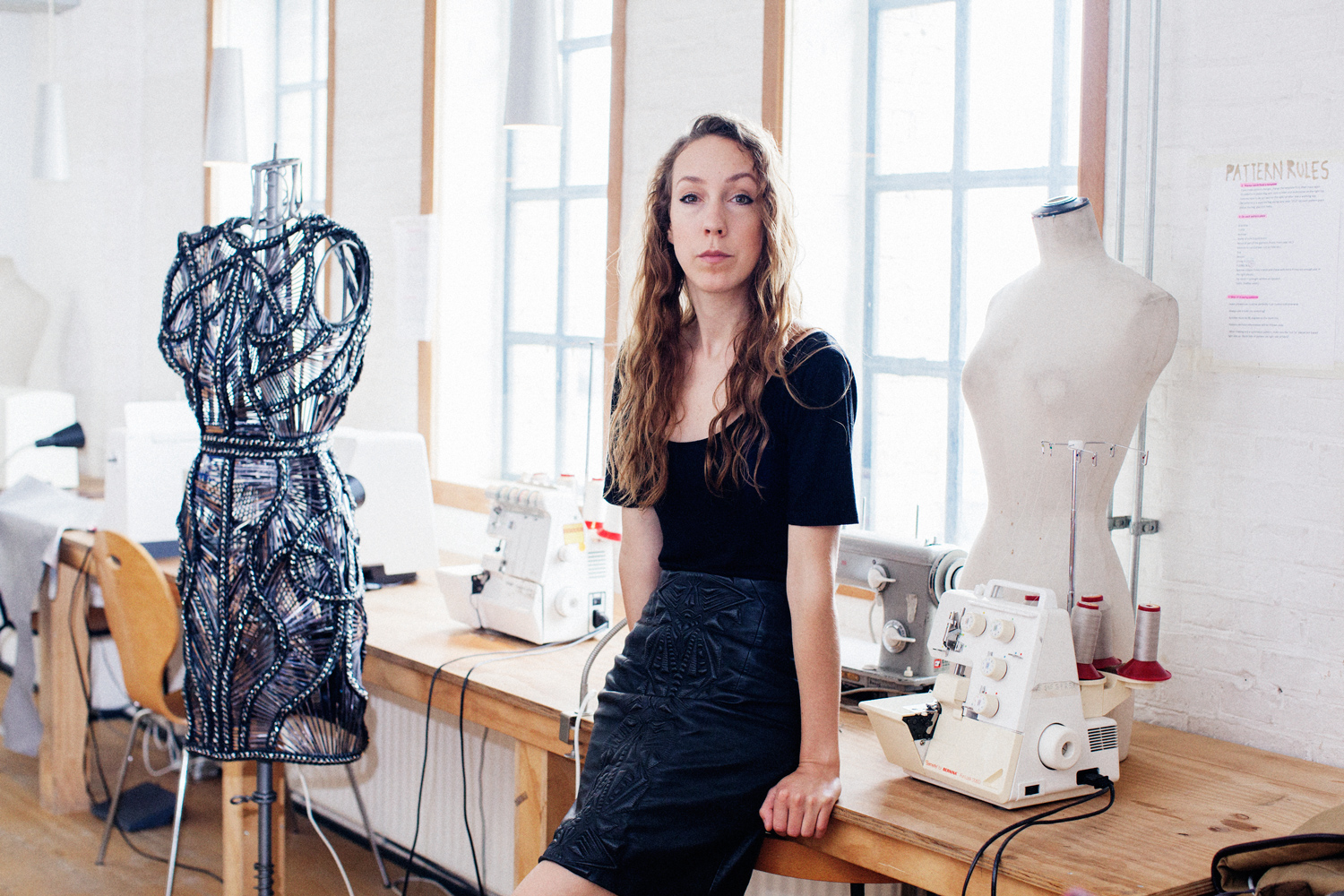
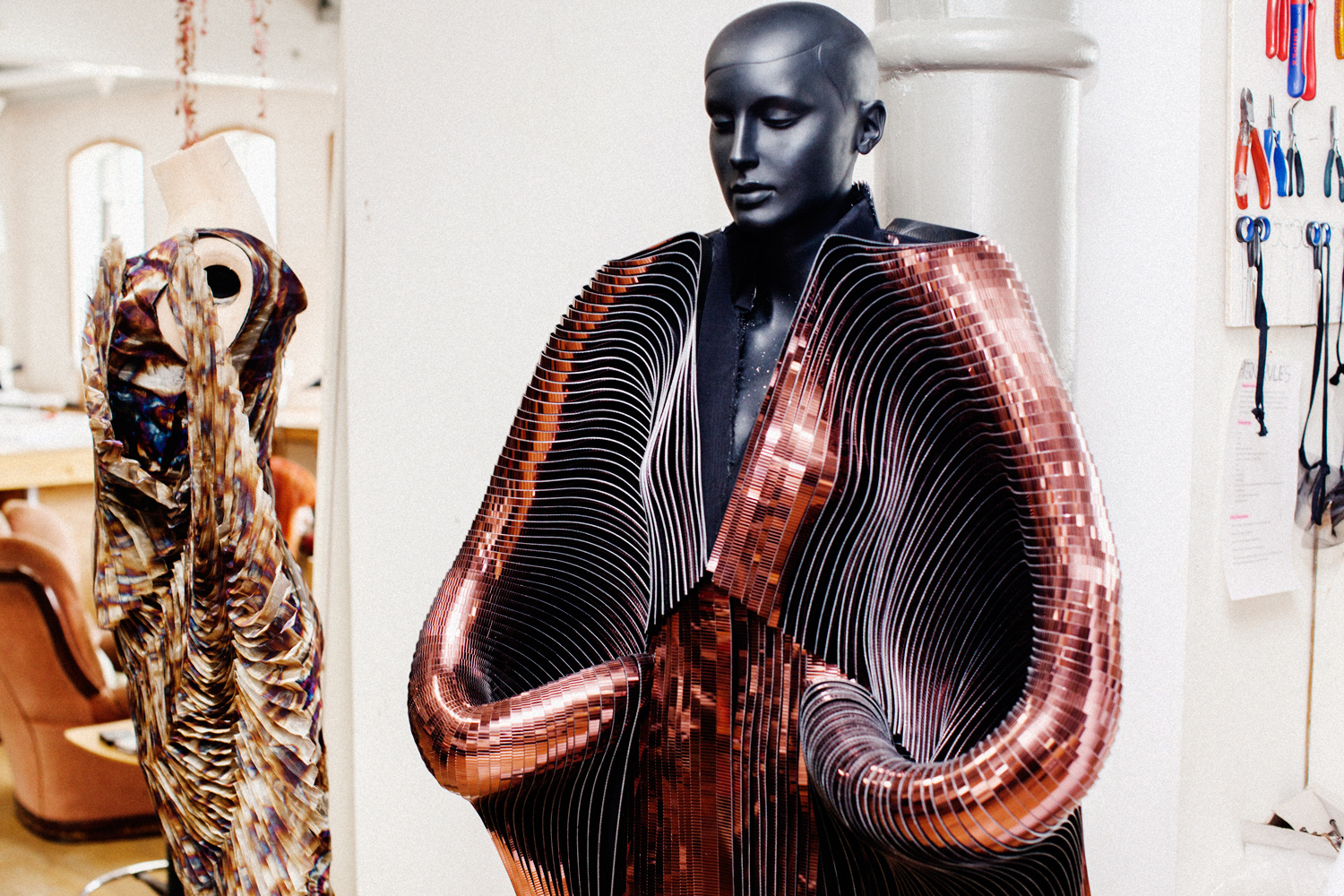
Famously van Herpen didn’t own a computer untill she was 22. It wasn’t until after she graduated from fashion design at ArtEZ Institute of the Arts, and an internship with the acclaimed Alexander McQueen (where she rigorously studied embroidery and beading) that she saw the benefits of a high-tech approach. Once the floodgates opened they never closed.
Ever since Fragile Futurity, van Herpen’s debut in July 2007, each collection has been a case study in how to combine prototype materials and traditional craft techniques. Her broad spectrum of influences – gothic-style oil paintings, mineral geology, choreography, 4D sound visualisations – mean she manages to reference the past while creating a vision of the future.
To give you a flavour, one of van Herpen’s latest projects, Hacked Infinity, was inspired by terraforming; the idea of artificially modifying a planet’s atmosphere and ecology in order to make it habitable for humans. Hundreds of components were designed and produced using 3D printing, but then painstakingly hand-burnished and hand-sculpted to create featherweight creations with unique colour schemes and out-of-this-world shapes.
Some pieces take a few weeks to create. The more complex ones, like the Sonomorphic Mirror dress, required months of endeavour, and years of research of development. “I am a workaholic,” admits van Herpen. “I work day and night and often weekends, and I don’t take a lot of holiday. Everything I do is from my own energy, love and interests. I’m fascinated by what I do and I feel restless when I’m not working.”
It’s a very organic process that mixes technology and nature
Thankfully a studio in Amsterdam, staffed with 22 people whose expertise range from architectural modelling to haute couture, helps van Herpen with the practical side of this. Then there are the various scientists and artists that she collaborates with on collections – people who share her interest in experimentation, and passion for innovation.
“I couldn’t collaborate with someone where there was only a work interest,” says van Herpen. It has to be more than that. A good collaboration feeds both people, you’re sharing something very personal. In a way working with someone is a way of having a relationship.”
In one special case the work and relationship really have gone hand in hand. The 4D sound sketches mentioned earlier were created by van Herpen’s long-term partner and artist Salvador Breed, who has created ambient scores, with surging bass throbs and off-kilter samples, for almost all van Herpen’s collections.
The other collaborations are platonic, but nevertheless engaging. Canadian architect Philip Beesley has now worked with van Herpen on five collections. Sometimes they share new ideas over Skype, at other times they look at a particular technical problem and, most recently, they visited the Hadron Collider together – a huge 27km circular machine that uses superconducting electromagnets to smash subatomic particles together at close to the speed of light – a true geek out if there ever was one.
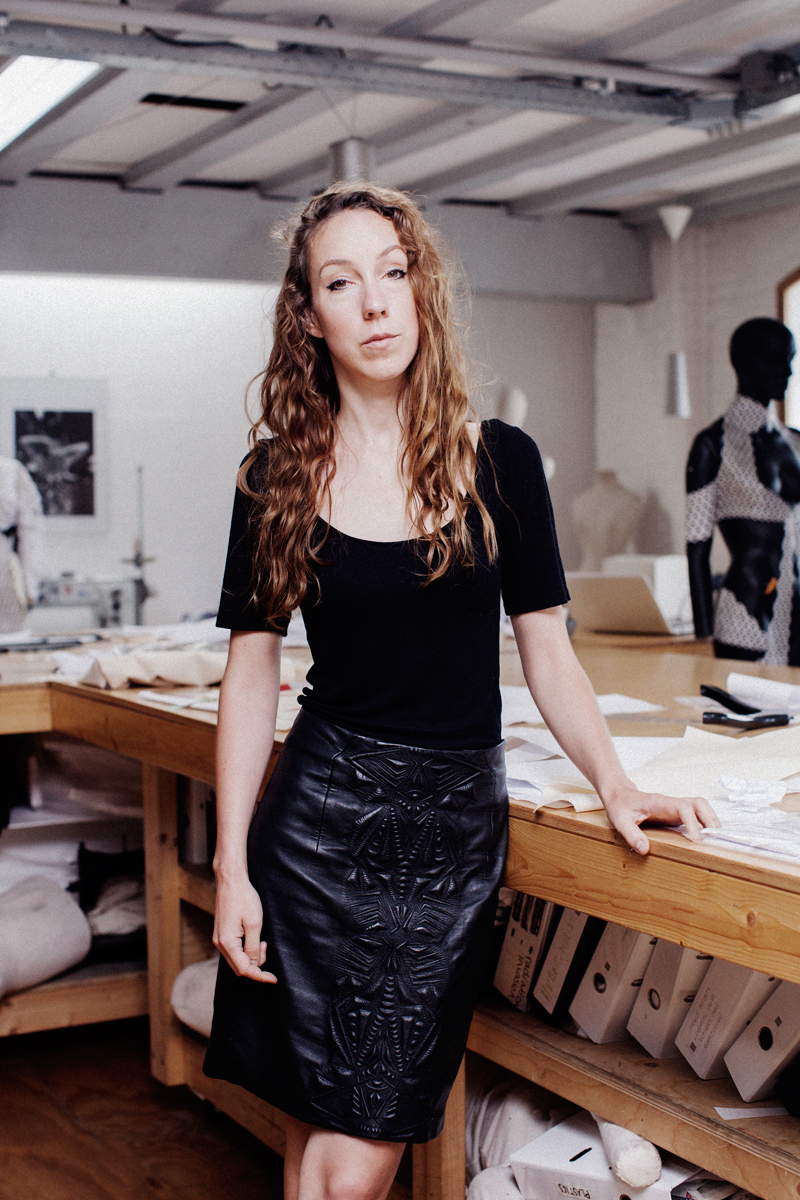
The field trip with Beesley eventually inspired Magnetic Motion, a collection that included micro-webs of lace veil, triacetate feathers and soft drapes, but, perhaps most importantly a colour palette made up of midnight blues and nudes that revealed glistening, metal architectural structures shaped using industrial-grade magnets.
It’s clear that while this is work for van Herpen, it’s also a lot of fun. “I have my freedom,” says van Herpen. “Developing something takes years. So It’s nice to have a deadline where I show the world something, otherwise I’d find myself perfecting it forever, but if something is not quite right I can use it in the next season.”
In the summer the studio takes breaks on the river IJ, where they eat, cook and swim. And, often van Herpen quite literally ‘let’s go’; her favourite hobby is skydiving – though she does relate this back to dancing and defying gravity.
The point is pressure comes from van Herpen, not from CEO’s or market reports. If she wants to cast Game Of Thrones actress Gwendoline Christie as the star of her latest collection she can. If she wants to focus on process over profit that’s her choice.
This means that rather than simply sending out sketches for others to work on, van Herpen has time to truly engage with the process of making, be it weaving a fabric using an age old technique or testing maquettes produced by a 3D printer.
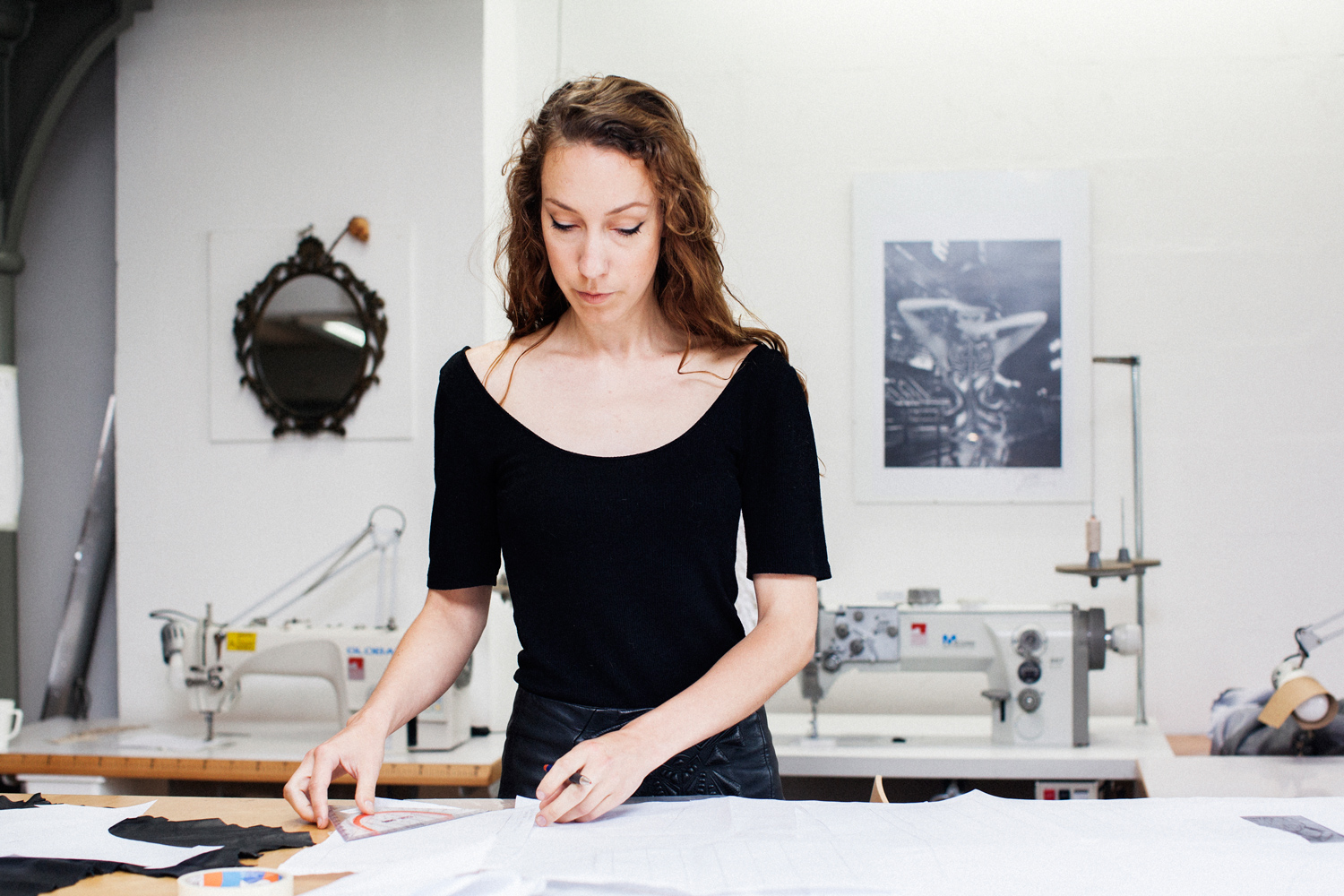
“If I’m working on a collection I’m doing it for that reason,” explains van Herpen. “So in that sense all my pieces are unfinished. They simply show what was going on in my mind at a certain time. It’s never perfect. If I look back at the things I’ve done I would always change something.”
The result is you’ll never see the designer’s graduate collection – she threw it away as soon as it came off the catwalk. “I feel I have to move on,” says van Herpen. “When things stay with me it’s like going back in time, which I enjoy at small moments, but in general I like going forward.”
This attitude means many refer to van Herpen as an artist, not a fashion designer. She’s not so sure though; “I’m actually really happy to be in a sort of constriction. I think the body is a very logical thing for me. I used to dance a lot and I’m still fascinated by that so that’s why I chose to combine the arts and the body. Fashion is something so personal. The identity between that person and wearing it and changing it into something else is way beyond what I could imagine.”
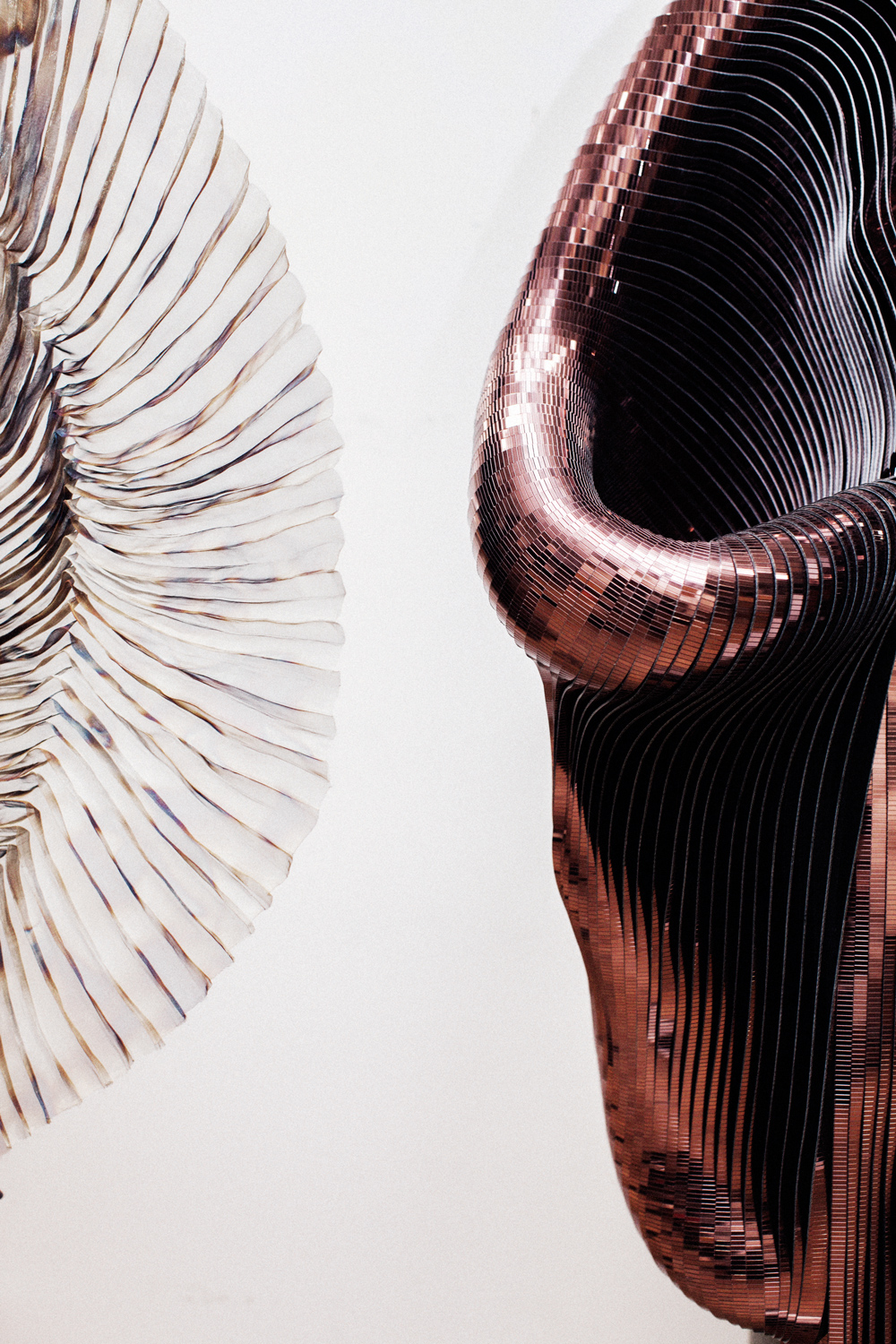
The body van Herpen is speaking about is undoubtedly a female one – even if van Herpen has flirted with androgyny and menswear models in her SS/14 show – and the feeling she wants her women to have is one of “empowerment” and “energy”.
To achieve this she obsesses over the right texture, material and person. “Ultimately that’s the goal of making something beautiful. You want to relate to the wearer, to their energy and enrich their feeling of power.”
Currently this truly personal touch is only available to haute couture clients. However, in the near future van Herpen hopes, thanks to advances in technology, more people will be able to experience bespoke pieces designed to fit the user’s body, aesthetics and taste in materials.
One day, she even speculates, her collections might be downloaded and hacked. “I started in haute couture, I’m now in read-to-wear and I feel interested in the gap between the two. It’s something that can be explored much more.”
As if to prove the point the designer wears one of her own pieces when we meet in Paris - a tan top, made from razor-thin leather, with micro-embroidery running down one sleeve, paired with rounded, electric-blue sunglasses. As with all her pieces the technology itself isn’t ‘visible’, in the form of a wearable or smartwatch, it's the production of the garments themselves that is innovative.
Still, that doesn’t stop van Herpen from obsessing over the latest gadgets and gear. She talks enthusiastically about the possibilities of 4D and robotic printing, where you can fabricate onto and around a body – “it’s a very organic process that mixes technology and nature” – before bemoaning the fact that: “I’m still waiting till it’s really ready to develop”.
It seems like the only thing holding van Herpen back is progress itself. “You need the industry to go with you,” she says. “It’s not about doing it on your own.”
Photography by Sophie van der Perre
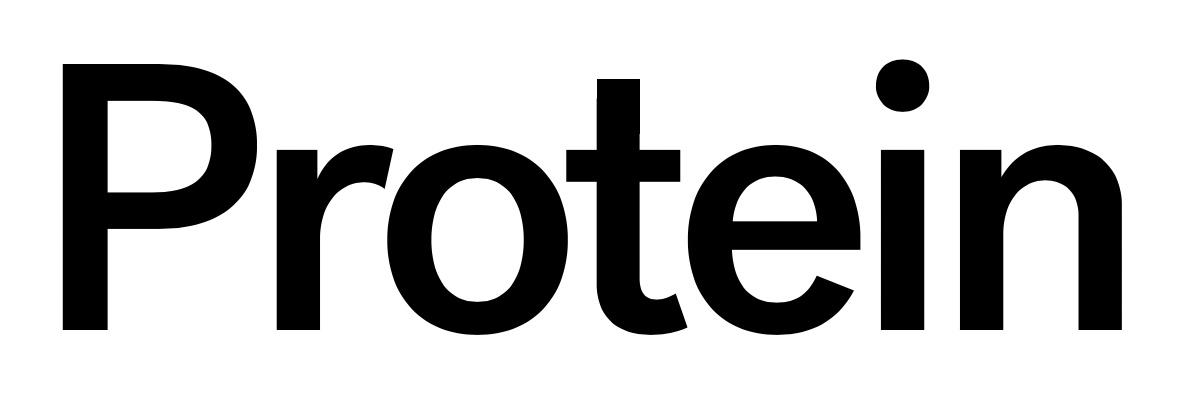

Discussion